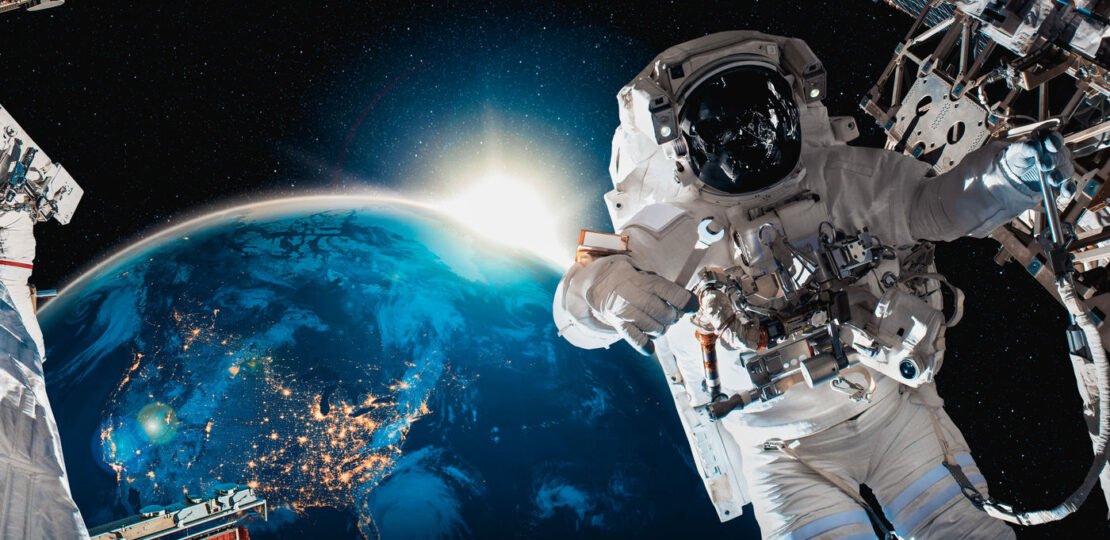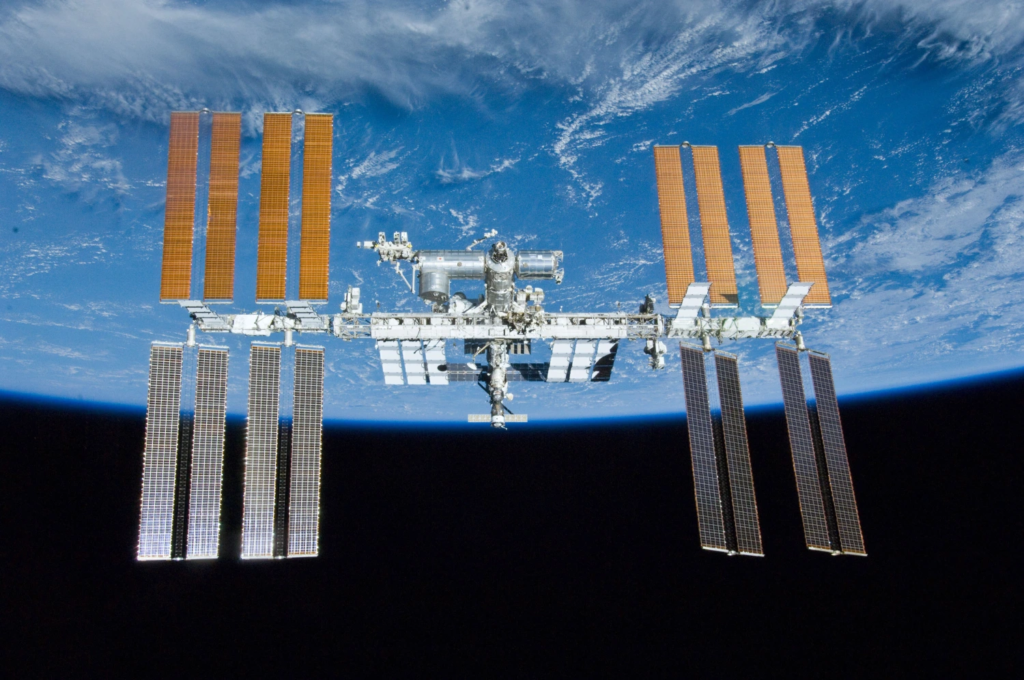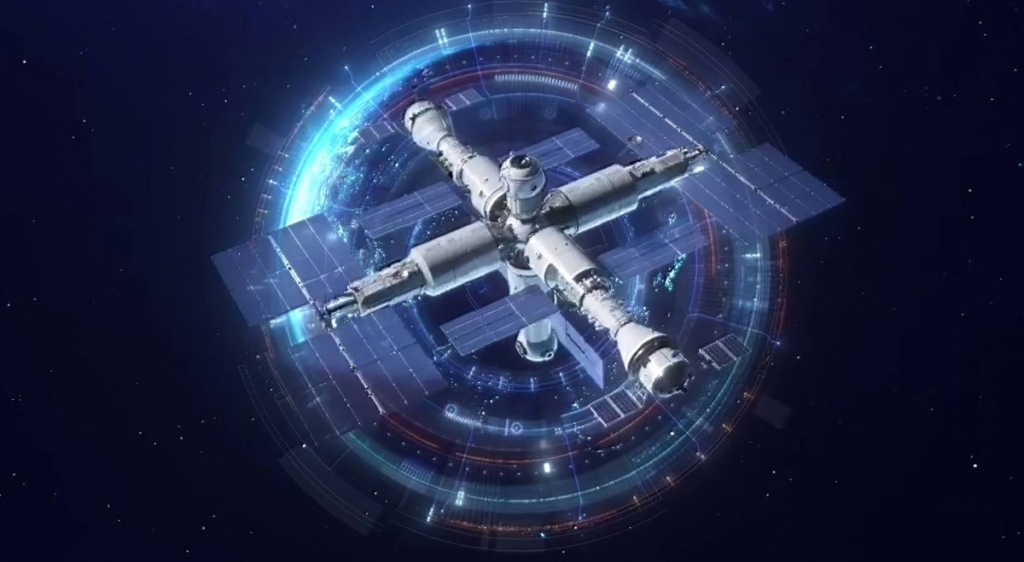
As the 20th century progressed, space exploration became a major issue in the Cold War. The world was caught up in this conflict between the United States and the Soviet Union. Both powers saw space exploration as a way to assert their status vis-à-vis the other. More than 30 years after the fall of the Soviet Union, space exploration is now a major political issue in many countries. One question still remains: is space exploration still a purely scientific quest or is it primarily a lever of power that allows one to assert one's rank on the international stage?
At the origins:
Space exploration became an important issue after the Second World War. Indeed, the Allies discovered Nazi plans to launch missiles from the sky called V2. The plans for these missiles were recovered by the victorious powers and inspired the design of atomic bombs as well as space launchers. The United States and the Soviet Union, now competitors, saw in space a means of promoting their ideologies. Thus began the space race.
It was the USSR that launched hostilities in October 1957 by sending the first satellite into orbit around the Earth, named "Sputnik". The Soviets took a considerable lead over the Americans, by sending, just one month after the launch of "Sputnik", a living being into space, the dog Laika. The best was yet to come for the USSR. On April 12, 1961, Yuri Gagarin became the first man to fly into space. Upon his return, the USSR became, in the eyes of the world, a country of technological prowess. Khrushchev, First Secretary of the Soviet Communist Party, saw in this feat a way to affirm communist ideology in the eyes of the world. Before nearly a million, perhaps a million and a half Muscovites who had gathered in Red Square, the communist leader first spoke to the citizens of the world. He sought to prove that only communist ideology could achieve such feats, even declaring that "This flight has shown the whole world once more the unlimited possibilities of the genius of a free people." He also did not hesitate to criticize capitalism and the United States, comparing them to military strategists who "prophesied at the time an imminent defeat of the 'armies of barefoot people,' as they called them," adding, "Where are they now, these unfortunate strategists!"

On the other side of the Atlantic, the United States found itself greatly weakened by these Soviet exploits. Communist ideology was becoming a credible ideology in the eyes of the world. American ideology was weakened by NASA's difficult beginnings. Indeed, the country was unable to send modules into space and saw Earth's orbit invaded by Soviet satellites. The United States, because of this delay, also feared being reachable from space by Soviet weapons launched into orbit. However, the arrival of John Fitzgerald Kennedy in 1961 changed everything. He made the space race his priority. On September 12, 1962, he gave a speech that would go down in history. It was during this speech that he launched the Apollo program, convincing Americans who were skeptical that the country would achieve the greatest feat in the history of humanity. Kennedy acknowledged that the USSR had taken a lead in sending a man into space, but uttered a now legendary phrase: "We choose to go to the Moon."

There was a before and after this speech by Kennedy. The United States quickly caught up. The race between the two countries became unbearable. On February 20, 1962, an American astronaut orbited the Earth three times in less than five hours. In March 1965, a Soviet astronaut made his first spacewalk. A few months later, the Americans accomplished the same feat. At the same time, the Americans began sending probes to study the solar system and, with the Mariner program, probes flew past Venus in December 1962 and Mars in January 1965. During that same year, the United States surpassed the USSR in the number of satellites orbiting the Earth (230 against 270). Meanwhile, the Apollo program was developing with varying degrees of success. Apollo 1 saw three American astronauts lose their lives aboard the rocket due to a fire. However, the project did not stop there and allowed the United States to get closer to the Grail. Apollo 7 allowed the astronauts to spend 10 days in orbit around the Earth, while Apollo 8 managed to travel into lunar orbit.
On July 20, 1969, the United States and Neil Armstrong set foot on the Moon. Kennedy's crazy project, since assassinated, finally saw the light of day, and America entered history. This American feat precipitated the fall of communism in the world. The "free world" that Khrushchev spoke of, embodied by the United States, had achieved the greatest feat in the history of humanity.

The USSR, victim of its excessive spending in this space race and in its army, gradually collapsed before disappearing in 1991. The American victory, both on the scientific and geopolitical level, was total.
Where are we today?
The space race is no longer at the heart of world news. Since 1969, the world has not reproduced a feat capable of bringing humanity together in front of its televisions. The scientific aspect seems to have taken over in the conquest of space. A symbol of this is the ISS (International Space Station) project, bringing together scientists from all over the world. Several nations are funding this project aimed at conducting experiments in space, and many countries/continents have their own laboratories there. A symbol of this scientific priority is the cohabitation of American and Russian astronauts aboard the ISS. The two countries, formerly rivals, now share the same goal: to advance science.

Europe has also turned to space, notably by relying on the collaboration of European States among themselves. The creation of the European Space Agency (ESA) in 1975 made it possible to structure European space cooperation around optional programmes, in which Member States participate according to their interests. A large number of successes have resulted from this cooperation, notably in the fields of launchers with Ariane, Earth observation with ENVISAT, and meteorology with METOP. The development of Ariane launchers has been a notable success, with more than 100 successful Ariane 5 launches up to 2019.
Collaboration between the United States and Europe is expected to intensify in the coming years. The ISS is getting old and is too expensive to maintain. The United States and NASA have therefore launched the "Starlab" project, which is supposed to replace the ISS in 2031. The station, which will be launched by SpaceX, will require European support. Indeed, the United States is seeking to convince Canada and Japan to continue funding the project, and Europe's presence could convince them. In addition, European skills are of technical interest to the United States. Many European technologies could continue to be used, such as the Columbus module and the Bartolomeo loading platform built by Airbus via the ESA for the ISS or the ATV built by ArianeGroup, also via the ESA, to supply the ISS with equipment and consumables. In addition, the Voyager Space company has chosen Airbus as a partner in this project launched by NASA, to build the habitat module.
A new “Star Wars”?
However, despite the scientific successes resulting from space collaborations, geopolitics continues to play a key role and seems to be becoming, more than ever, the main driving force of the new space race.
Reflecting the global geopolitical situation, many countries are challenging American hegemony. This is particularly the case for China and India. These nations are well aware that achieving scientific feats in space would have major geopolitical repercussions on Earth.
China's plan is to become a space superpower by 2045. To do this, China has drastically increased its spending on space. This spending has increased from 3 billion Canadian dollars in 2022 to 19.5 billion Canadian dollars in 2023. These investments have also paid off since China has already completed several missions. It became the first country to land on the far side of the Moon and brought back samples last June. The country also launched its own space station, named "Tiangong", into orbit in 2021. With the ISS set to disappear in 2031, the Chinese space station will, for the moment, be the only station in orbit. China had never been able to send astronauts to the ISS because of US fears that the country would steal information and technology. China also plans to send astronauts to the Moon, explore one of Jupiter's moons (Callisto) and flyby Uranus in the near future. China also has plans to create a "space silk road". China's BeiDou satellite navigation system, an alternative to GPS, has 45 satellites in orbit and 120 ground stations. This project, initially for military purposes, could connect the entire world to 5G. It has raised concerns in the West, particularly in the UK, which fears that China is spying on its citizens.
China also aims to establish an International Lunar Research Station (ILRS) in collaboration with Russia. By 2050, the ILRS is expected to be fully functional for lunar research, and its lunar launch platforms are expected to be capable of conducting crewed interplanetary missions. China has successfully convinced 10 other countries to join the project. Ten countries have committed to participate in the ILRS: Venezuela, Azerbaijan, Russia, Egypt, Thailand, Pakistan, Turkey, Belarus, and South Africa.

Russia, for its part, wants to compete with the United States in the space sector again. It had planned to leave the ISS project in 2028, but the war in Ukraine prompted Vladimir Putin to dissociate himself from the project in 2024. In addition to its partnership with China, Russia wants to create its own space station, called "ROSS". In August 2022, Russia announced a two-phase project for this station, with a first stage planned between 2025 and 2030, and a second before 2035. Although this project is particularly expensive, Moscow has the technical know-how acquired during the Cold War. Moreover, in authoritarian regimes, financial considerations often take a secondary place.

India and Brazil are also seeking to assert themselves as space powers. Both nations want to launch their own space stations in the coming years. India wants to use this project to limit Chinese influence in Asia, while Brazil wants to take advantage of its location, which is ideal for launching rockets. This is also why the European Union has chosen French Guiana as a launch site.
On the other side of the Atlantic, the United States views the emergence of these powers with suspicion. The country has also launched ambitious space programs designed to assert its sovereignty. The budget dedicated to space increases every year, and the White House says it is ready to invest $25 billion in 2025 in this sector. This budget increase has allowed NASA to launch the Artemis project, which is supposed to bring men back to the Moon in 2026. This project, named after Apollo's sister, will see a woman set foot on the Moon for the first time (as well as a man of color). NASA has also formed alliances with private companies such as SpaceX in order to carry out these projects. These partnerships allow it to finance the equipment necessary to implement these missions. Cape Canaveral, the American space launch site, is also equipped with a SpaceX launcher. The Americans are also determined to replace the ISS, as mentioned earlier, so as not to leave this privilege to China.

On the surface, the new space race seems to be driven by scientific ambitions and technological advances. However, behind the scenes, it is geopolitics that is calling the shots. The great powers are engaged in a silent battle to dominate this ultimate playground, where each space success strengthens terrestrial influence. Officially focused on research and exploration, this competition masks a more brutal reality: the sky has become the new chessboard where global power relations are being drawn. The conquest of space, once a collective dream, is now the scene of a confrontation for global supremacy. This shows once again that humanity shares common dreams, but seems incapable of achieving them without dividing itself. As Philip II of Macedon, father of Alexander the Great, said, we must know how to divide in order to better rule, and even beyond our terrestrial borders.
RELATED POSTS
View all



